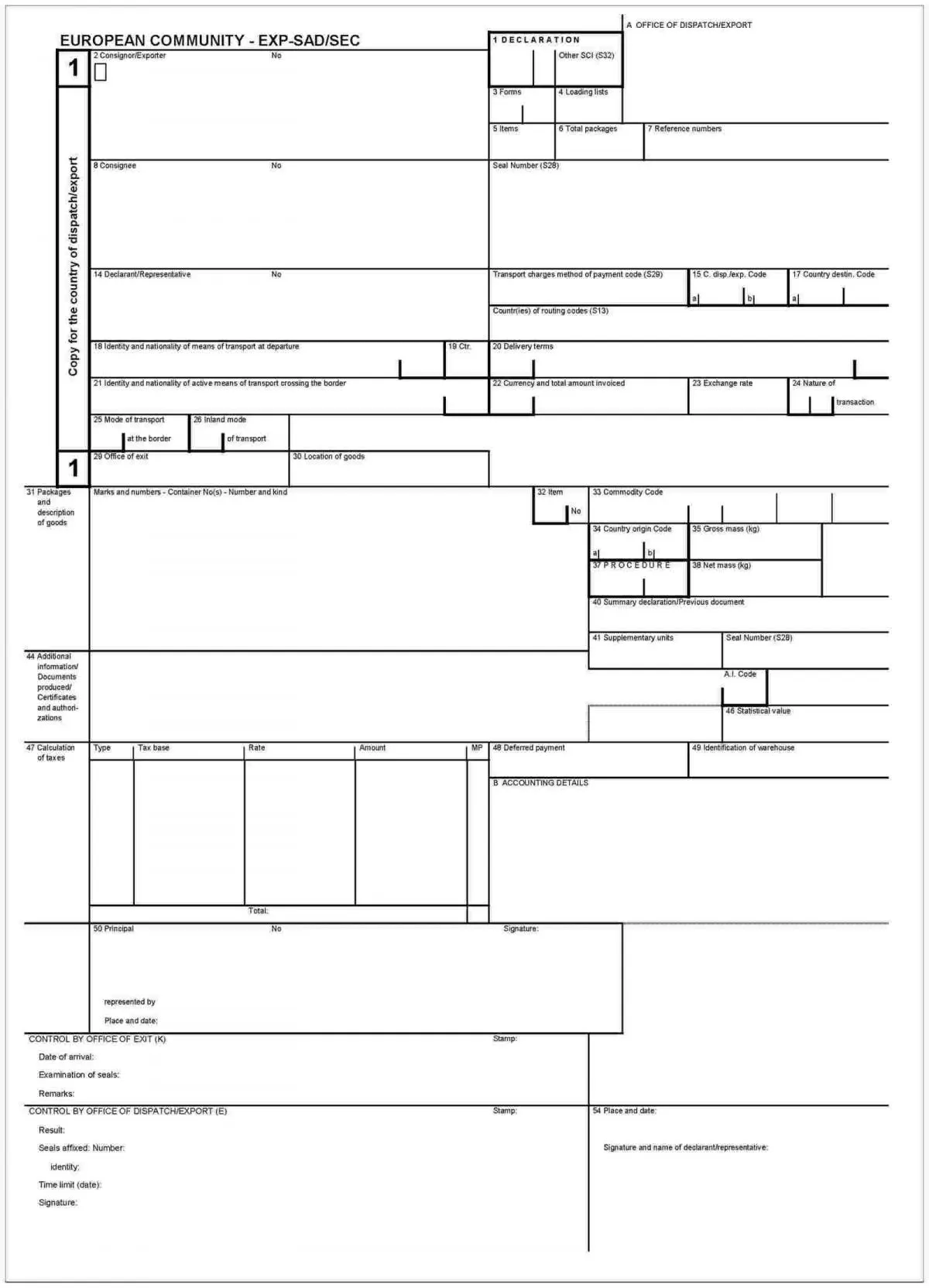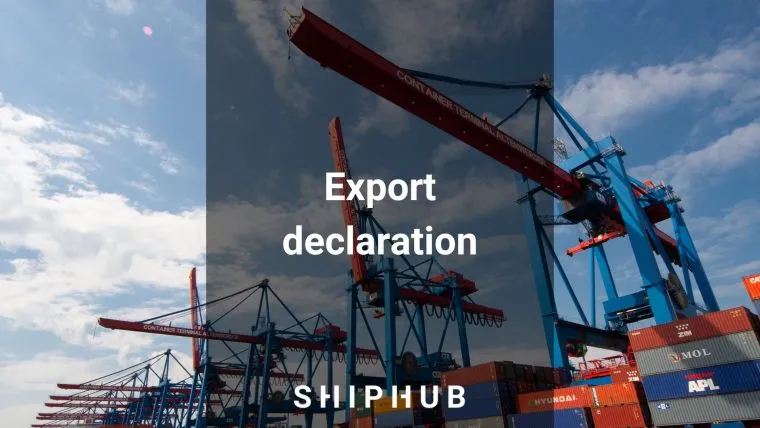It is important for countries to keep a record of transactions in foreign trade. Therefore, a business must carry out customs procedures to import or export. In the case of exports, shippers have to provide information on an export declaration form.
What is an Export Declaration?
An export declaration is a shipping document that contains information about the goods that the shipper intends to export. It states the exported goods, the number of goods, and their value. Such information will be analyzed and integrated into the country’s trade statistics.
- In most cases, the exporter/shipper must submit an export declaration form at the port of export.
- Some nations accept only digital export declarations.
- There is no global standard for export declaration – every country/customs territory has its format.
Let us explore export declaration forms submitted in the United States and the European Union.
Exporting from the US
Shippers that export from the United States must submit an Electronic Export Information form (EEI) if the value of commodities within a shipment exceeds $2,500. It can also be submitted by the exporter’s authorized agent (e.g. a freight forwarder who has been issued power of attorney).
It means that in the US, in case of a consignment valued below $2,500, there is no obligation to complete an export declaration form. However, the case is different when the shipment requires an export license or is bound for an embargoed country (see more examples).
Information required on a US Export Declaration
Below we discuss export declaration filed in the United States. The details that must be provided on a digital form in the Automated Export System (AES) include:
- E-mail Response Address
- Shipment Reference Number – a unique identification number (1-17 alphanumeric characters)
- Filing Option
- Mode of Transport (MOT)
- Port of Export
- Departure Date
- Origin State
- Country of Destination
- Inbond Code
- Whether the shipment is considered a Routed Transaction
- Whether USPPI and Ultimate Consignee are related
- Whether the shipment contains hazardous material
- Information of the involved parties in the transaction: ID Numbers, Company Names, Addresses, and more
- Export Information Code
- Commodity Description
- Value of Goods (in USD)
- License Type Code/License Exemption Code
- Whether the filing includes used vehicles
- Whether the filing requires Participating Government agency data
- Carrier SCAC/IATA (only required for vessel, rail, air, and truck shipments)
- Conveyance Name/Carrier Name (only required for vessel, rail, air, and truck shipments)
- Transportation Reference Number (only required for vessel shipments).

Exporting from the EU
Most goods exported from the EU customs territory must be declared in an export declaration form.
The exporter presents the goods, export declaration, and in some cases, export license at the customs office responsible for the place where the business is established or where the goods are packed or loaded for export. The standard form of the EU export declaration is an electronic one via Export Control System (ECS). There are three main export declaration types: simplified declarations, declarations for outward processing, and re-export declaration.
Information Required on a UE Export Declaration
The EU export declaration contains the particulars laid down in Annexe 9 UCC TDA, such as:
- Goods item number
- Specific circumstance indicator
- Supporting and transport documents
- Information of the involved parties in the transaction: Names, Identification Numbers, Addresses of the Consignor and Consignee; Data of Declarant, Representative, Carrier, and other actors
- Transport charges: Method of payment
- Dates
- Places-Countries-Regions: Country of routing of consignment, Location of goods
- Customs office of exit: Reference number
- Goods identification: Gross mass, Description of goods, Type and number of packages, Shipping marks, Dangerous goods UN number, Commodity code (Harmonized System sub-heading code)
- Container indicator (container identification number).

See more posts on documents in shipping and used for customs procedures.





